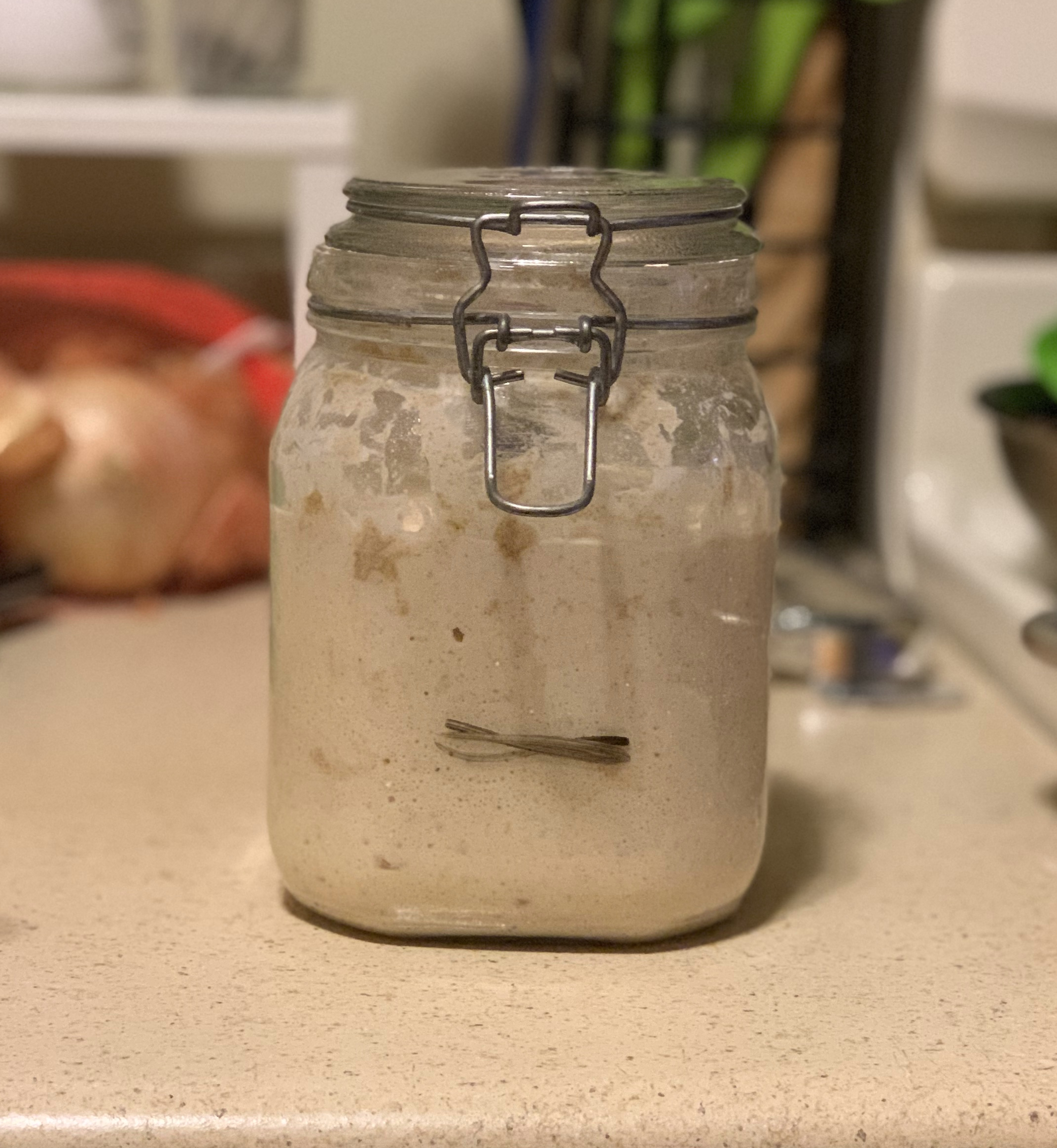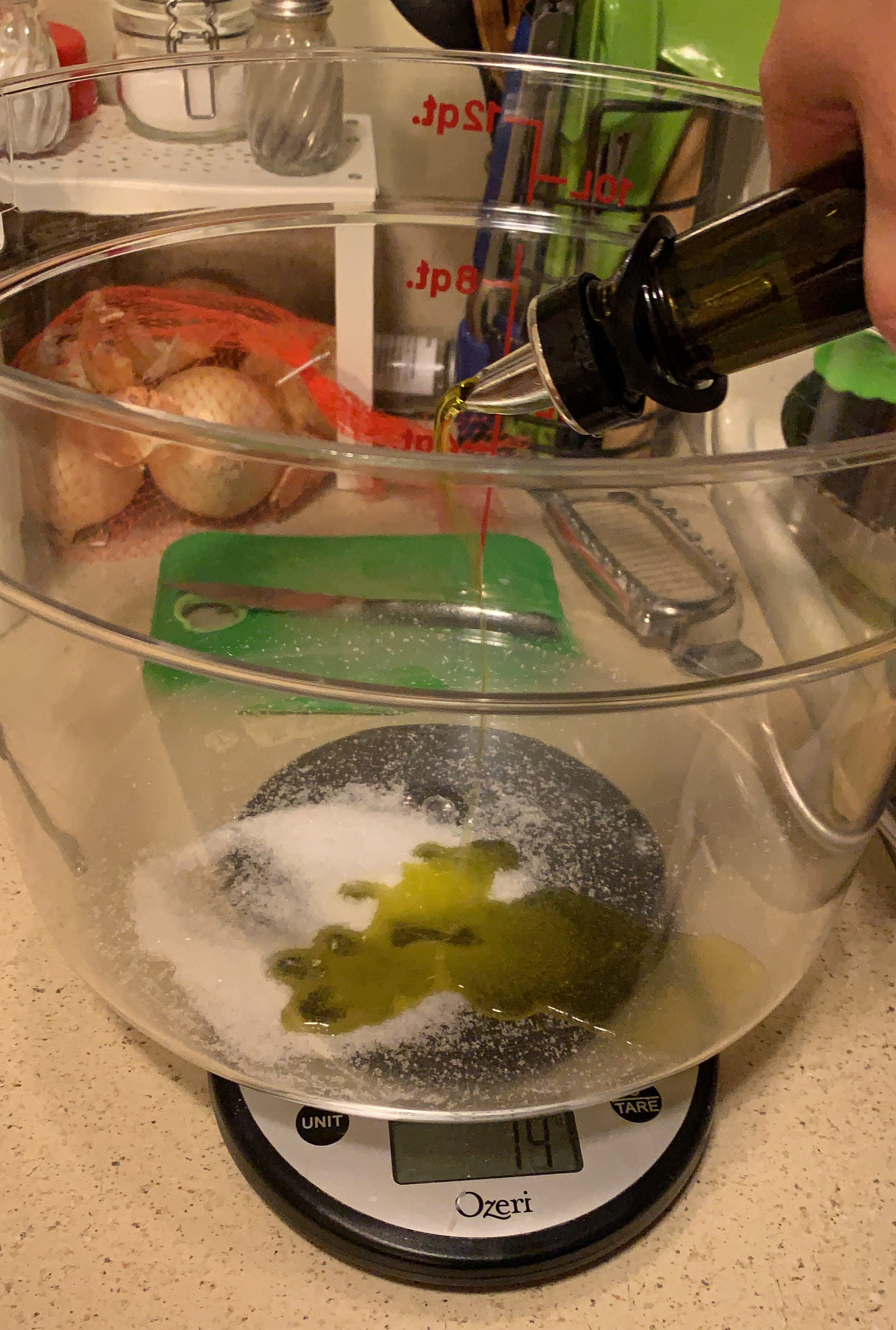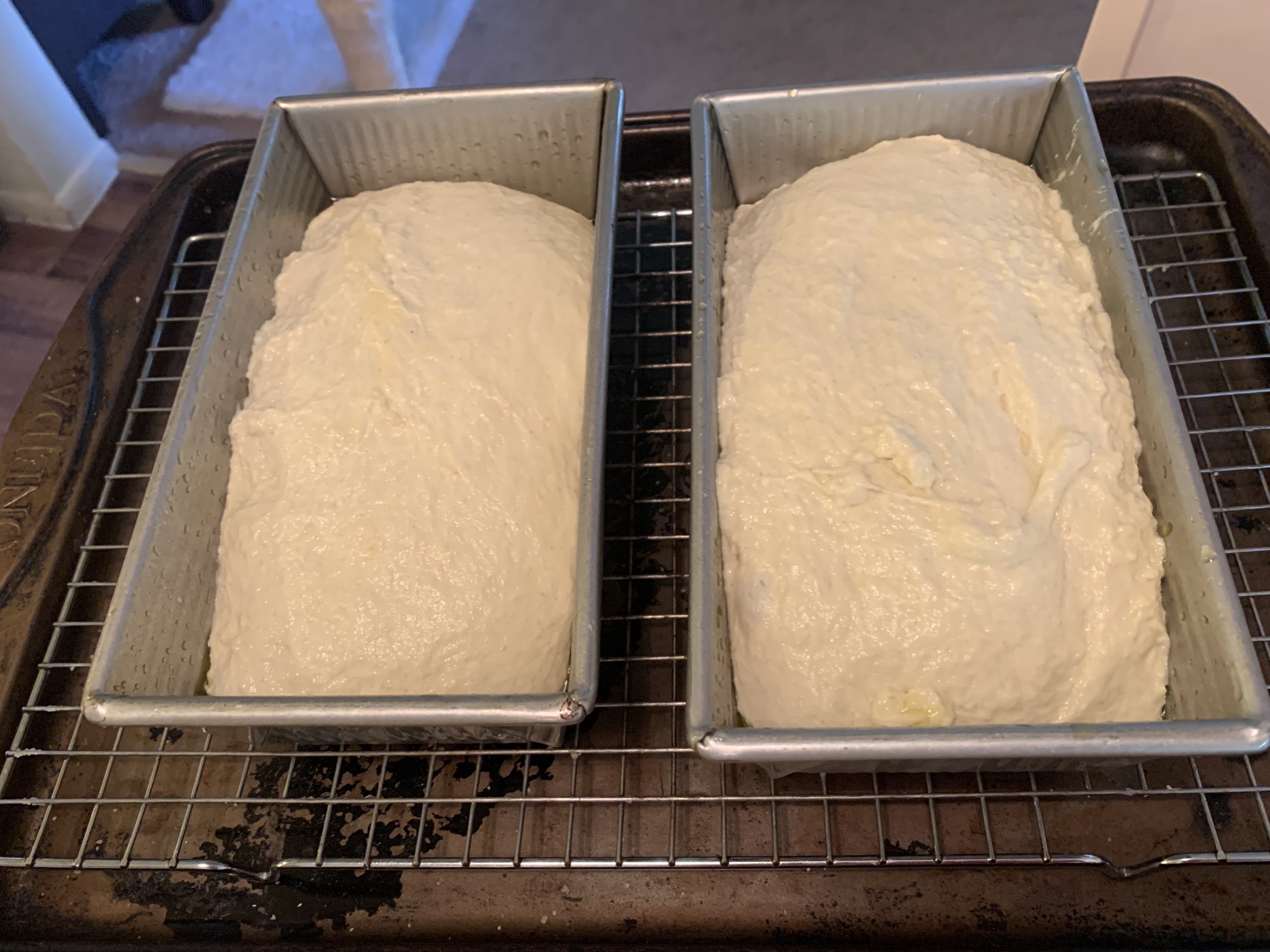New World Sourdough is a 2020 cookbook by Bryan Ford. I will not be reproducing Ford’s recipes in my blog. Read his blog, buy his book, support his work.
For this week’s bake I wanted something to share that could be either part of a meal or a solo snack. Bonus points if it could last a few days and was vegan. The sea salt and olive oil tin loaf fit the bill.

Usually enriched loaves use very non-vegan ingredients (butter, eggs, milk), which lend the crumb a soft texture and keep the bread edible for much longer than lean doughs. The enormous quantities of olive oil in this recipe take on the enrichment role, expanding the circle of friends who can partake.

We Can Work It Out
As always with enriched doughs, I did not know when to stop kneading. This dough was very wet (65% water, 20% olive oil), and I think it would have benefited from a few more minutes of work. A professional once told me that you don’t have to worry about over-kneading if working the dough by hand (as opposed to using a mixer, which I don’t currently have access to), but I love to worry anyway. Since this was destined for a supportive tin, I stopped when it was smooth but still sloppy.

Ship Shape
I don’t quite understand how shaping effects the final loaf—any loaf. Bakers emphasize a tight, intentional shape for lean doughs made into boules or baguettes. For quick breads, like banana bread, there’s no shaping at all. You just dump the final mixture into a pan and let ‘er rip.
Yeasted tin loaves like this one seem to fall somewhere in between. Ford describes a pretty loose rolling method, but I have a hard time letting go of the tucks and seams of other breads. I don’t know if there are negative consequences from shaping a loaf like a batard and then plopping it into the tin. Next time I will keep my tucks to myself and see if there’s a noticeable difference.

The rise on these proofing loaves was beautiful. I love to see dough growing upwards—proof that my wild yeast is alive and kicking. Look at that! I reinvented the term “proofing.”

Where There’s Smoke…
I blithely added yet more olive oil and sprinkled Maldon sea salt flakes onto the loaves before putting them in the oven. As always at this point, my attitude was “They’re in God’s hands now.” A few minutes later I noticed a strong smell and smoke coming from the kitchen. Approaching the oven, I caught the last flash of flame as olive oil dripped onto the heating element—sloughed off as the dough rose beyond the walls of the tin.

I quickly put a baking sheet on the lower rack. This caught the oil and prevented further flames, but it did nothing to prevent smoke. Olive oil’s smoke point (I learned while frantically googling for solutions) is 410°—below the temp for this bake. My devil-may-care handling of the final olive oil might have been excessive; a smaller quantity may have baked into the dough without incident.
I considered whether a baking sheet with a layer of water would have helped by receiving and neutralizing olive oil drops. It would create steam that is not accounted for in the recipe, but the effects (if any) could be reduced by removing that tray midway through the bake, once all the oil that will drip has dripped. If I make this again, I may give that a shot.
Worth It
I baked these loaves about 7 minutes longer than called for because a meeting ran long (j/k I’m bad at time management). The crust was nicely brown and crispy, but the crumb was underbaked. Perhaps I let out too much heat when I was dealing with the fireworks. It was nevertheless highly edible, and excellent with food.

Imagine if you baked focaccia as a sandwich loaf: that is this bread. It lasted several days and was enjoyed by vegans and non-vegans alike. This bread is simple to make (barring any wildfires) and a joy to eat.

This looks so good!
LikeLiked by 1 person
Pingback: New World Sourdough: Pão de Queijo + Discard Johnny Cakes | Put It In Your Hat
This was my first dud loaf from the Ford book. I’m wondering about the vitality of my starter, the olive oil, the oven heat and baking time. I took mine out after 30, but should have gone longer. Very little oven spring. I’m glad that I cut the receipt in half. Instead of this, I’d strongly recommend the Jamaican Hard Loaf
LikeLike
There are so many elements at play, it feels daunting to figure out which one(s) cause any particular result. I’m glad to hear the Jamaican Hard Loaf is good! I haven’t had that bread before, and I’m interested in what it’s like.
LikeLike
How did you manage the schedule for this? Did you do the eight hour refrigeration overnight (and do you think it can go longer than 8)? Trying to plot this out and the schedule is tricky!
LikeLike
I looked at the timestamps on my pictures, and it looks like I mixed/kneaded ~8:30PM and divided/shaped ~10AM. I probably put it in the fridge a little under 4 hours, but there was definitely more than 12 hours total rising time. I usually don’t worry about rising in the fridge going too long (though anytime I’ve cut a fridge rise too short I’ve regretted it). Writing out the times and fitting them into my real world schedule is my favorite first step to any bread recipe. I hope this helps (?)
LikeLike
I made this today and after having multiple failed starts, I was excited to finally get it in the oven! But the crumb was underdone on mine, too. I started searching for reviews of this recipe to see if other people ran into the same issue, and that is how I ended up here. Thank you for all the great details!
LikeLike
It’s always comforting to find other people in the same boat! I’m glad you found this useful. 🙂
LikeLike